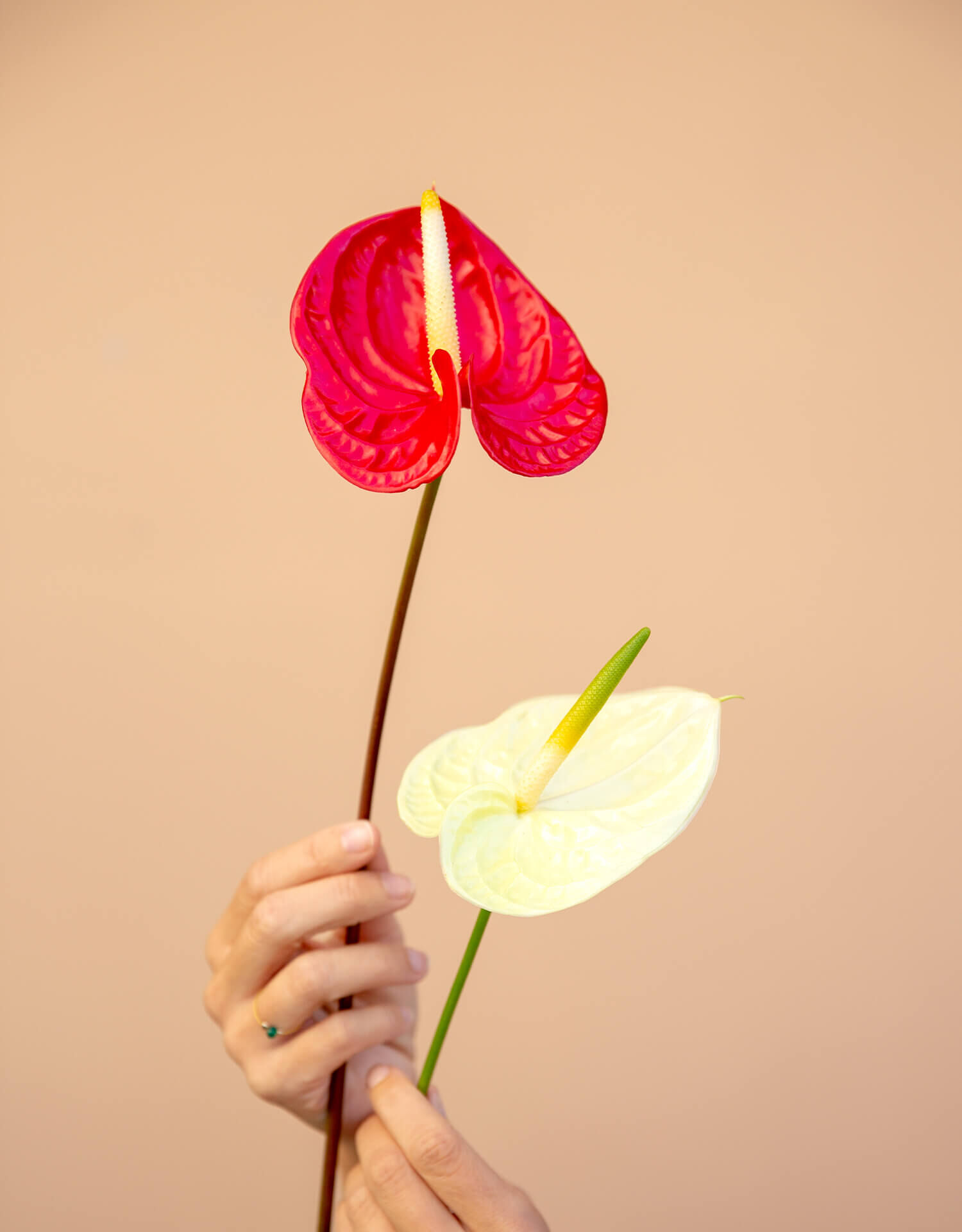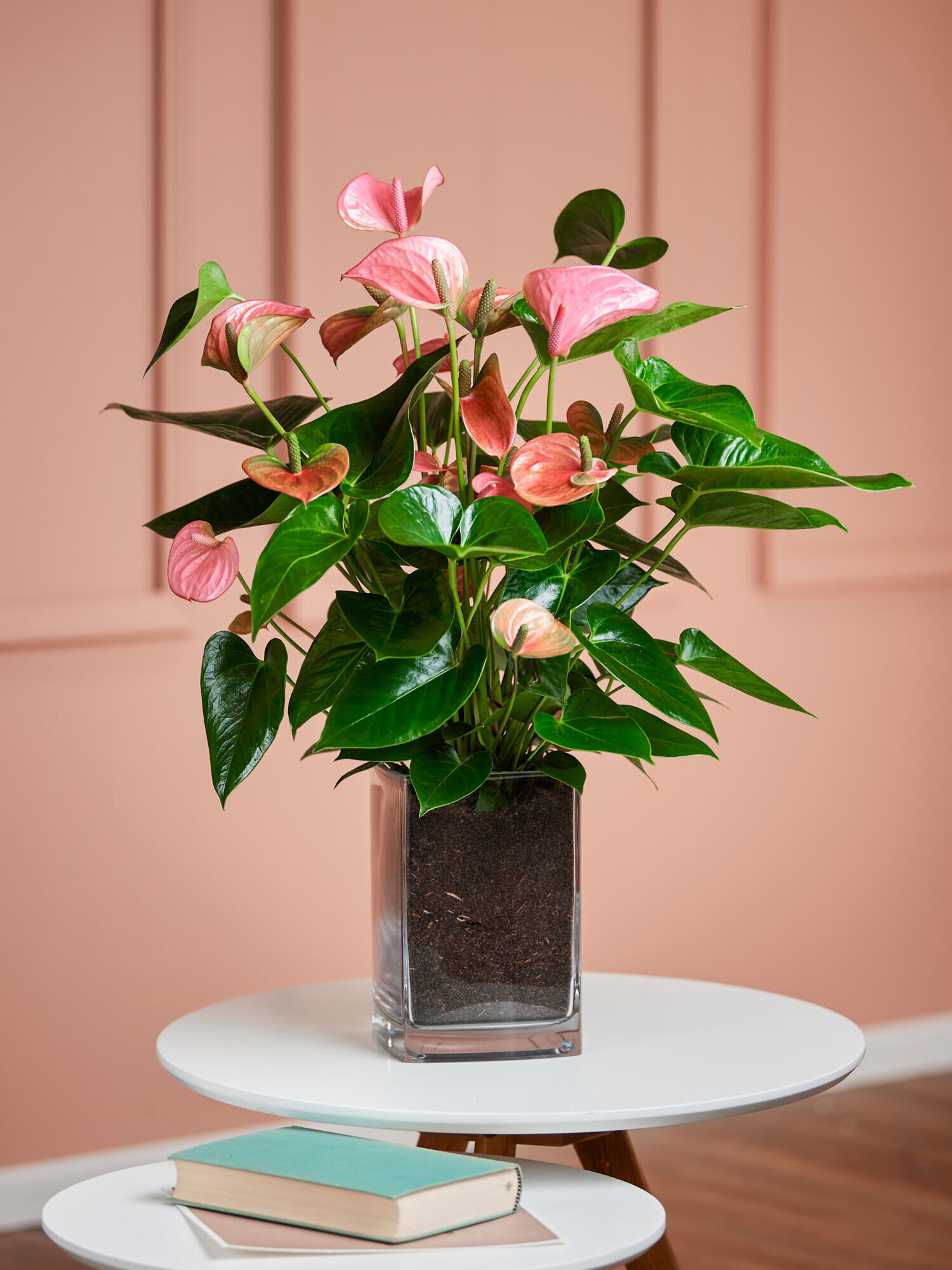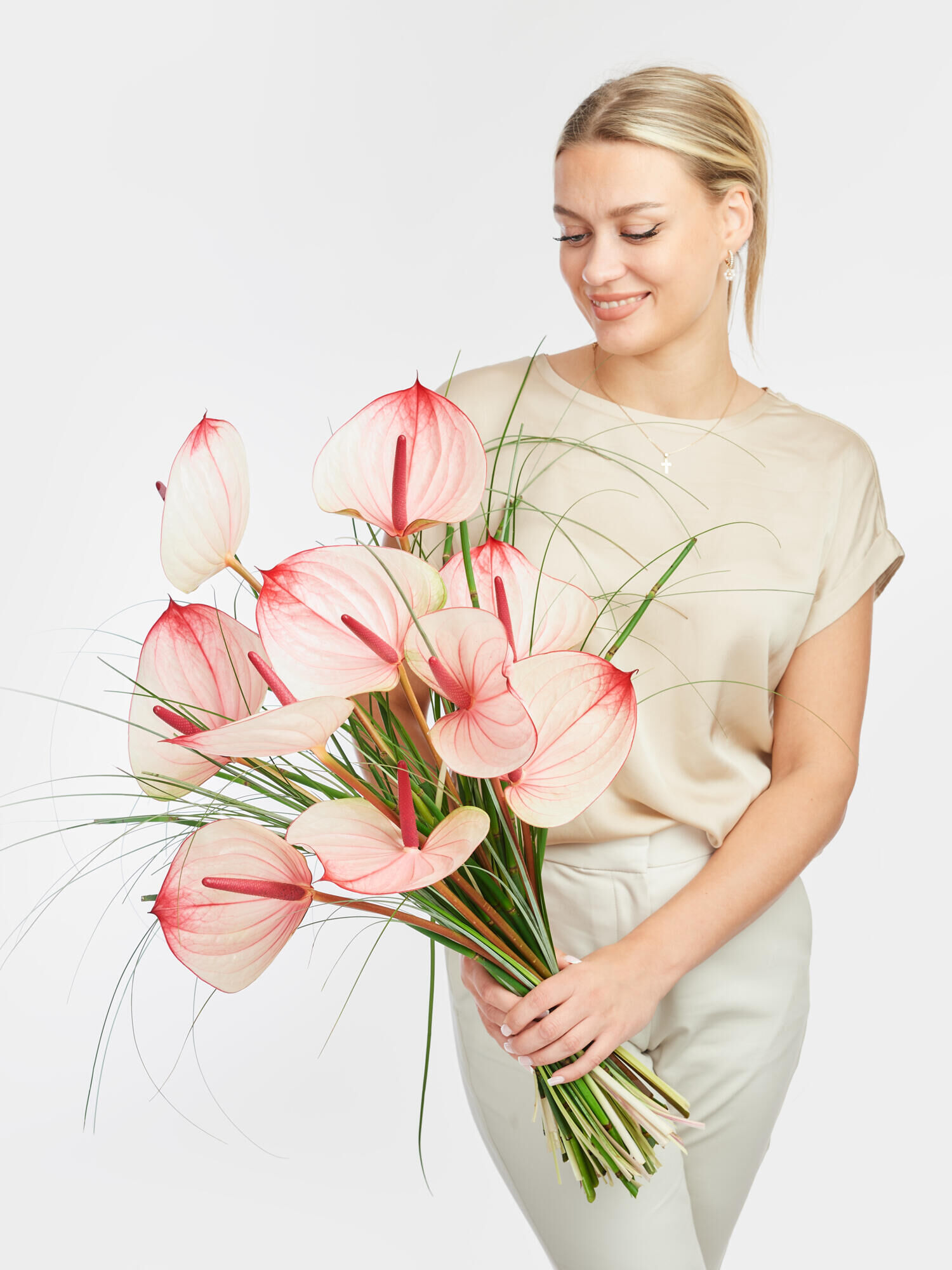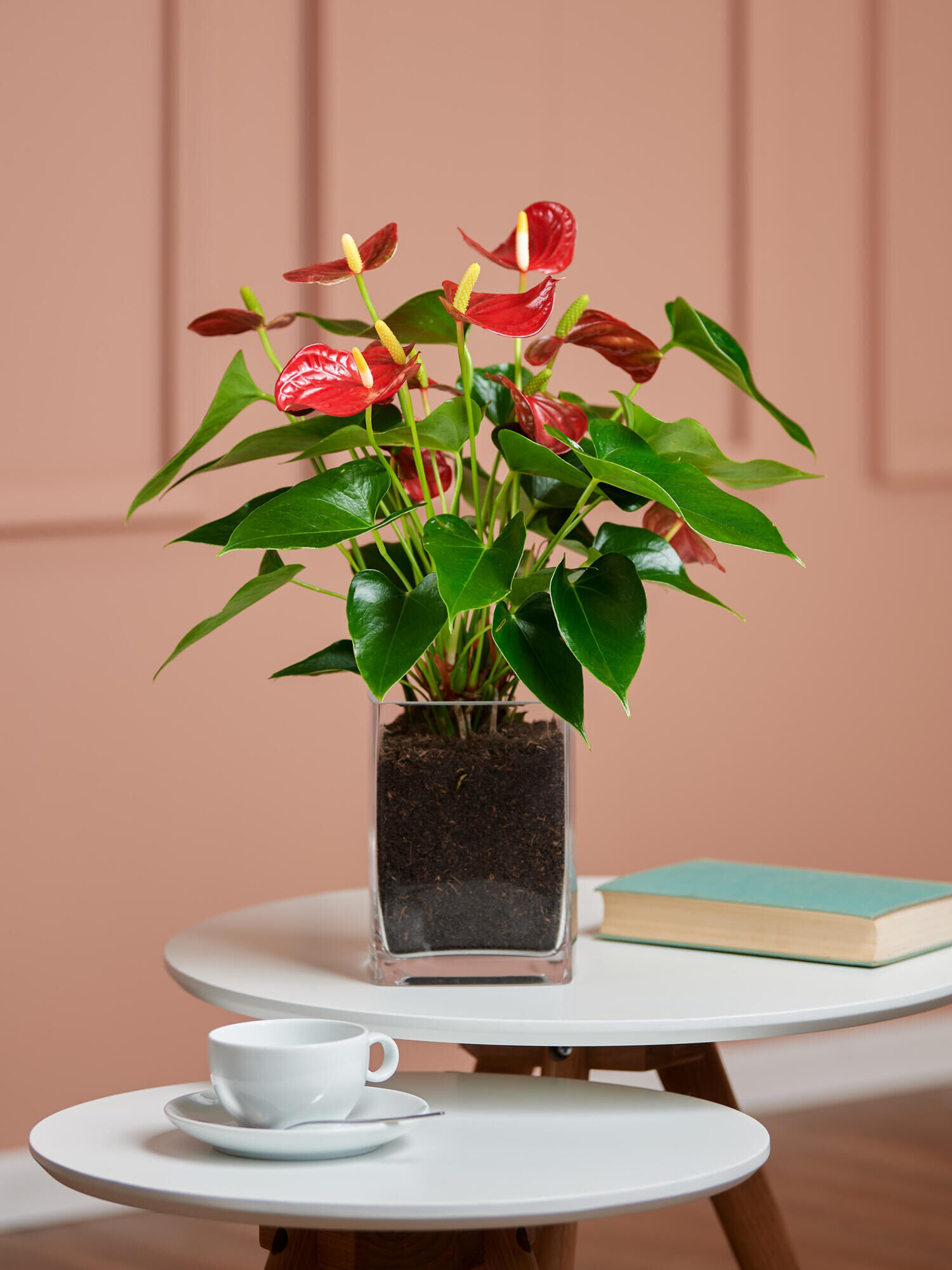Anthurium Care: Tips for Flamingo Flower
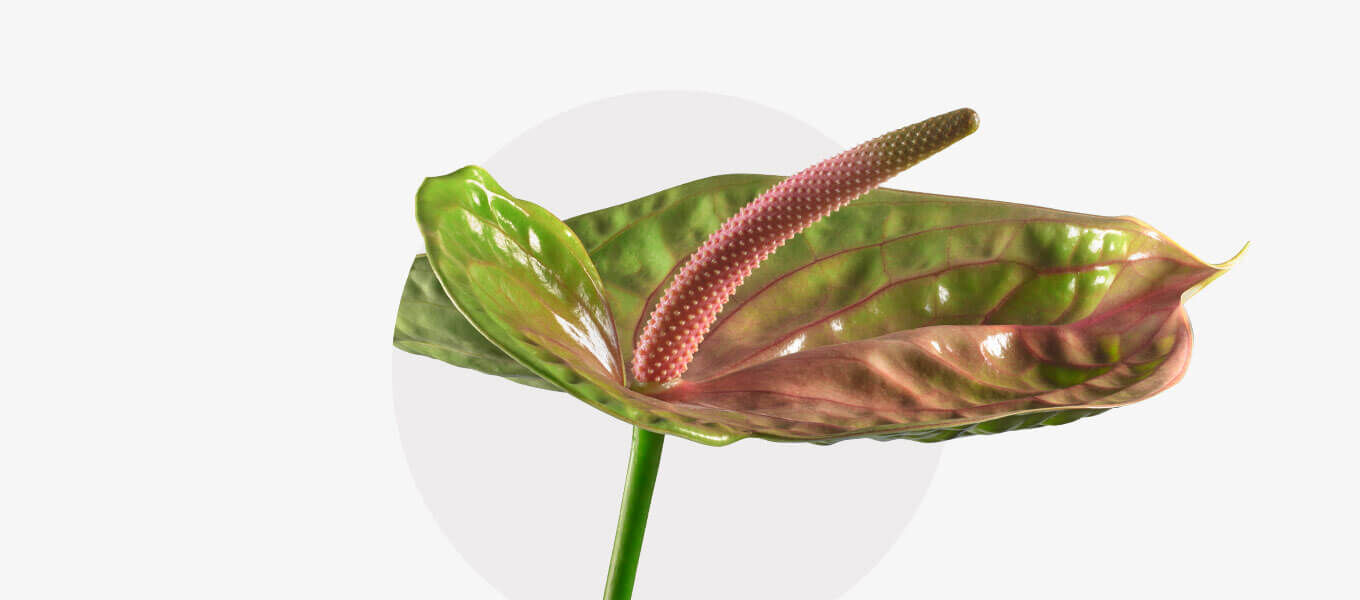
The flamingo flower, botanically Anthurium, belongs to the arum family (Araceae) and owes its German name to its bright bracts, which are usually red, but can also be pink, pink or white. Anthuriums are evergreen and perennial. In their native South America, they are mostly found growing epiphytically (epiphytic plants). It is very popular here as a tropical houseplant and flowers almost all year round, even without intensive care. Below you can find out everything from flamingo flower care to the best flamingo flower location and everything else you should know so that you can enjoy it for a long time.
The most important facts about the plant family
The native habitat of this plant from the arum family is tropical regions. This already indicates that the flamingo flower prefers warmer temperatures, slightly more humidity and brighter locations.
Botanical name
The flamingo flower is botanically called Anthurium and belongs to the Araceaea family, the arum family. Anthuriums are the most species-rich genus in the arum family.
Origin
Anthuriums originate from the rainforests of South Africa.
Anthurium varieties
Despite the rich diversity of the genus, two species are particularly popular as houseplants: the greater flamingo flower (Anthurium andraeanum) and the lesser flamingo flower (Anthurium scherzerianum). flamingo flower (Anthurium andraeanum) and the lesser flamingo flower (Anthurium scherzerianum). Varieties of this species, which is mostly used as a houseplant, include 'Acropolis' with white bracts, 'Baron' with green-pink bracts, 'Cheers' with pink bracts and 'Rosee Choco' with dark red bracts.
Meaning of the flamingo flower
Anthuriums are said to be "exotic and colourful". Self-confident people are particularly pleased to receive an anthurium as a gift. But the flamingo flower is also chosen as a sign of love.
Care of the flamingo flower
Anthuriums are easy to care for. If you respect their needs, you can enjoy them for a long time. Especially the large flamingo flower blooms for around 300 days a year. However, there is a trick that can be used to prolong the flowering of the lesser flamingo flower. We recommend placing them in a cooler, frost-free location at around 15 degrees with less water for around four weeks. This actively stimulates flower formation.
How much light does the flamingo flower need?
The Anthurium loves a bright location, but be careful with direct sunlight and excessive humidity. These decorative plants are sensitive to draughts. The plants should not be exposed to direct sunlight.
Which soil for the anthurium?
Anthuriums love a well-drained, humus-rich substrate.
Watering - How do you water an anthurium?
Ideally, watering should be done with lukewarm, lime-free water. Once or twice a week, depending on the temperature. Caution: Avoid waterlogging. During the growth phase, the plants are grateful for a lukewarm shower. The question of watering from above or below can be answered with "both". This is because this plant, which originates from tropical regions, tolerates both types of watering. However, too much should be avoided: Anthurium standing in water could lead to permanent damage.
Fertilising the flamingo plant
Fertilise between April and September at 14-day intervals with a pot plant liquid fertiliser. In winter, fertiliser is applied once a month.
Pruning the anthurium correctly
Anthuriums do not need pruning. Dried leaves and stems should be removed to prevent pests.
Repotting the flamingo flower
A simple method is to divide the old mother plant. Flamingo flowers often even develop rooted side shoots. It is best to divide the root ball in spring and, depending on the size of the old plant, replant the two to three fresh plant parts.
In a pot - How do I care for an anthurium in a pot?
In addition to regular watering, older plants in particular should be checked for dry leaves and stems. After flowering, flower stems should be removed directly from the base of the plant.
Special care in winter
In winter, the plant can be kept a little cooler, so a location in the bedroom, which is usually kept a little cooler, is ideal. However, not below 15 degrees. Water less in winter and do not fertilise.
Common pests & diseases of anthurium
Root rot is observed as a disease. Pests may include scale insects, red spider mites or spider mites.
The brown leaves are usually caused by insufficient humidity.
Too little light can lead to yellow leaves.
Ideally, a suitable location should be found and the anthurium can be given a shower of the large leaves (or sprayed with lukewarm water).
Frequently asked questions
The anthurium is not flowering? The plant may be diseased (pests) or it may be in the wrong position. The flamingo flower should be in a bright position, but not in direct sunlight.
No. The plant can tolerate slightly cooler temperatures in winter than in summer. However, it should not be cooler than 16 to 18 degrees.
Anthuriums are also very persistent as houseplants and flower for years in our homes. If a plant becomes too large, it can be divided.
Yes, all parts of the anthurium plant are poisonous.














